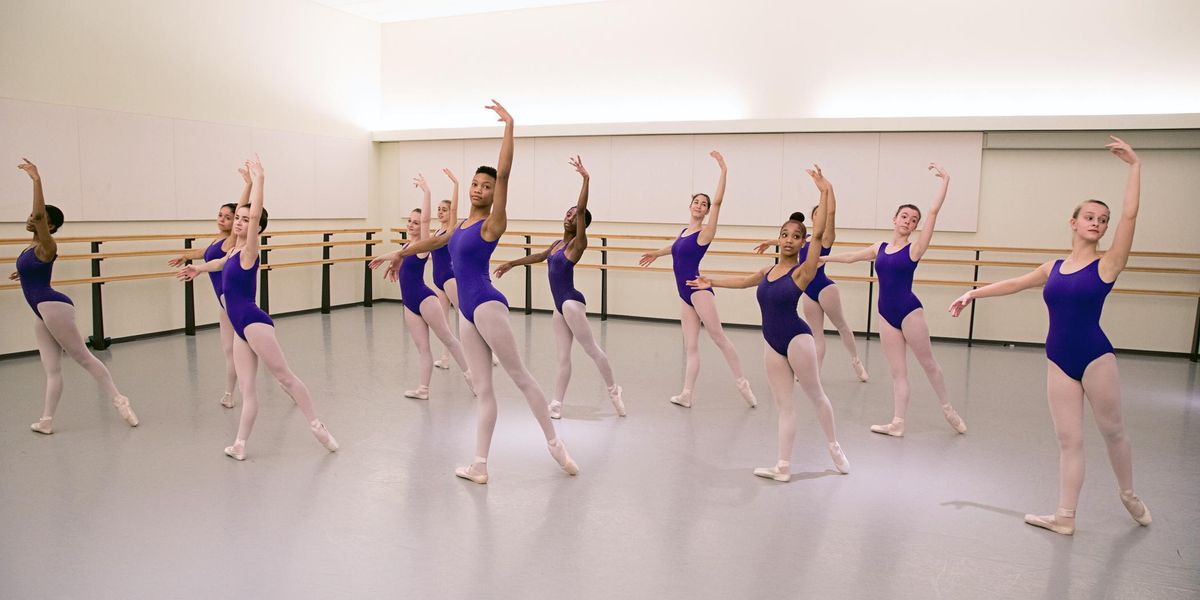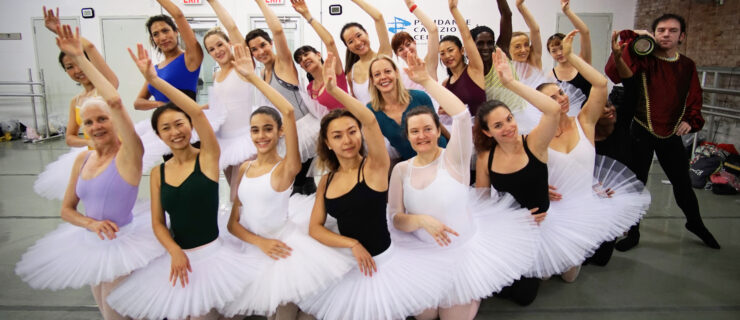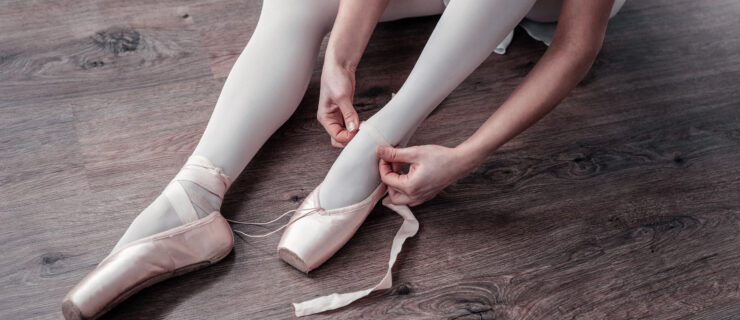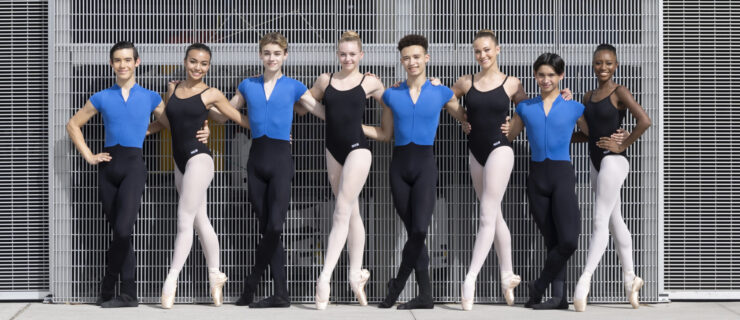What's Life Like at a Performing Arts High School? 3 Pro Dancers Share Their Experience
Imagine taking all your academic classes with fellow dancers—plus actors, painters and musicians. Imagine spending all day, every day, on a campus designed and outfitted to support your total dedication to dance. If you’re a ballet dancer who attends a public or private performing-arts high school, this apparent dream is your everyday life. (Nope, we’re not jealous, not at all.) For an insider’s look at this educational experience, Pointe spoke to three recent grads of arts high schools who are now professional dancers.
Ricardo Urbina Reyes

Corps de ballet, Hamburg Ballet, Graduate of Idyllwild Arts Academy
When I was 14, I won a scholarship at a ballet competition to go to Idyllwild, a boarding high school in California. I had zero expectations of what it would be like—and I didn’t speak a word of English. But there were a lot of other Mexican students in the dance department, so with them helping me out and the ESL program, I felt welcome.
Before going to Idyllwild, I had no idea about other cultures, other languages, even other people’s beliefs and dreams. I had academic classes with people from Russia and Italy. You’d sit in the cafeteria with people from China and Germany. Even all the academic teachers had a background in the arts—they had all been singers or actors or dancers themselves.
 Idyllwild Arts Academy dance students during barre. Cory Jones, Courtesy Idyllwild Arts academy
Idyllwild Arts Academy dance students during barre. Cory Jones, Courtesy Idyllwild Arts academyFrom our first day, my classmates and I were treated like members of a dance company, with professional-level opportunities, like choreographing and producing our own performances as seniors. Another part of that professional experience was how busy they kept us! After breakfast, we had academic classes from 8 am to 1 pm, and then arts classes from 2 to 6:30. Then dinner, then, from 7:30 pm to 10 pm, we’d have rehearsals, and then “room study” from 10 to 11, for homework. This was Monday through Friday, and on Saturdays we’d sometimes have master classes from guest instructors.
On Sundays, we were free. The school is up on a mountain, surrounded by nature. There’s a little town with a movie theater and supermarket, but mostly my friends and I stayed in our little bubble, taking nature walks, watching movies and just growing up together. So we concentrated and really gave all our energy to the reason why we were at Idyllwild in the first place: for our art.
Deanna Stanton
 Deanna Stanton. Melissa Dooley Photography, Courtesy Ballet Arkansas
Deanna Stanton. Melissa Dooley Photography, Courtesy Ballet ArkansasDancer, Ballet Arkansas, Graduate of Baltimore School of the Arts
Though I grew up 45 minutes from Baltimore, it was a last-minute decision to audition for Baltimore School for the Arts. My mom heard about the audition through a friend who knew I was a competition dancer. During the audition class, I realized I really wanted to go. I just kept thinking, Oh my gosh, this is amazing.
Because BSA is free for students who live in Baltimore City but also open to commuting students like me, I was hoping there would be teachers and dancers of all different sizes and shapes there. When I was younger, teachers told me I’d never make it professionally as a taller dancer, but when I got to BSA, I quickly learned that wasn’t the case. The counselors and teachers were there to guide you towards whatever you wanted to achieve, in the arts or in another career field.
Looking back, I’m amazed by the opportunities my classmates and I had at BSA. Every year, we’d collaborate with the Baltimore Symphony Orchestra. Outside choreographers (like Barry Hughson) came in all the time to set pieces on us. In physics class, we were assigned a project based on our art form, so I analyzed the changes of speed in piqué turns!
I totally credit BSA for why I’m a professional dancer today. The full days of dancing prepared me to do the amount of work that’s expected when you join a company, all without burning out. I learned so many essential things, like how to actually learn a ballet you’re understudying when you’re standing at the back of the studio. I don’t know if I would have figured out that choreography is my passion if I hadn’t gotten opportunities from such a young age to choreograph on myself and my peers. And I can’t say enough how absolutely inspiring it was to be surrounded by other people who are passionate about their art form, whether it’s dance or not.
Joseph Massarelli
 Joseph Massarelli in the pas de trois from Swan Lake at Dutch National Ballet. Altin Kaftira, Courtesy Dutch National Ballet
Joseph Massarelli in the pas de trois from Swan Lake at Dutch National Ballet. Altin Kaftira, Courtesy Dutch National Ballet
Soloist, Dutch National Ballet, Graduate of Chicago Academy of the Arts
I grew up in a Chicago suburb and started dancing in middle school. One day, my teacher told me about this performing-arts high school in the city that he thought would be a good fit. I looked it up, but saw the yearly tuition was too high. (I have two siblings, who were about to go to college at that time.) The teacher encouraged me to audition anyway, in case there was a scholarship—and there was.
At the Academy, academic classes were usually about 10 kids, because the school itself has only about 100 students (30 to 40 in the dance program at any given time). We had a lot of freedom in what we studied. Junior and senior years, you could pick from English courses like Latin-American literature, women’s literature or African-American literature. I also got to take philosophy, which was so cool.
The majority of my friends were dancers, but I also made connections with other students and their art forms. In my senior year, I reached out to a fellow student whose work I loved to design costumes for a piece I choreographed. A lot of the musical-theater kids were in our dance classes, and we dancers performed in the all-school musical. I remember being intimidated by the media-arts kids, because they were so well-spoken in class! And I wish now that I’d taken advantage of the free lunchtime singing lessons that one of the musical-theater teachers offered.
The Academy nurtured and enriched me to be who I am today. Being introduced to different styles and repertoire has had such an impact on my versatility. The faculty trusted us to learn and set pieces quickly, which is a huge help now, learning from videos. But most of all, the Academy introduced me to students from different areas of Chicago and the Midwest. I learned what it means to have privilege, which now informs my activism for a more equitable dance world.





